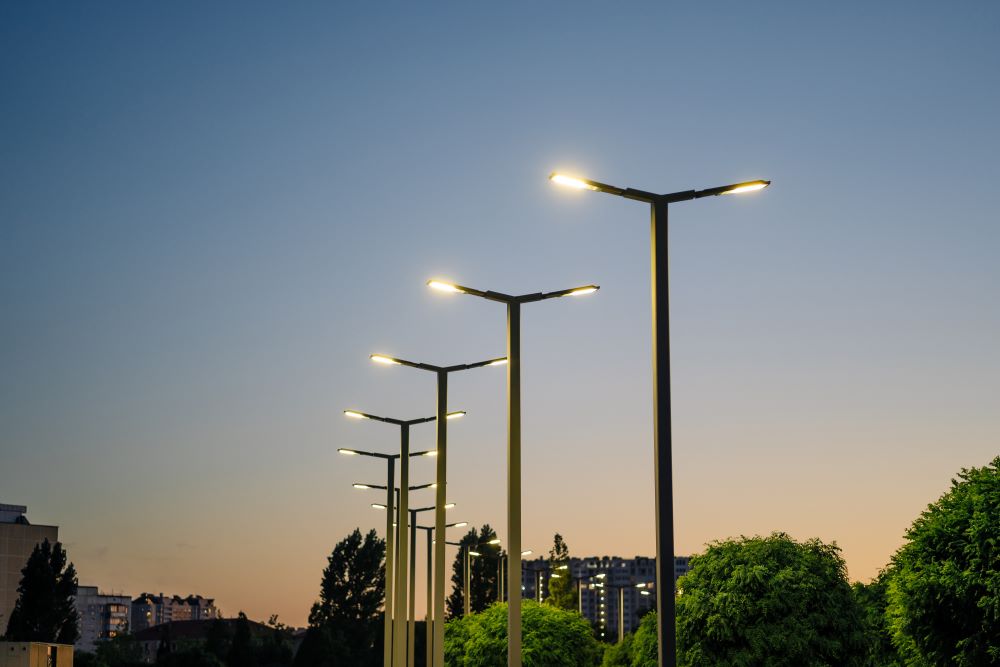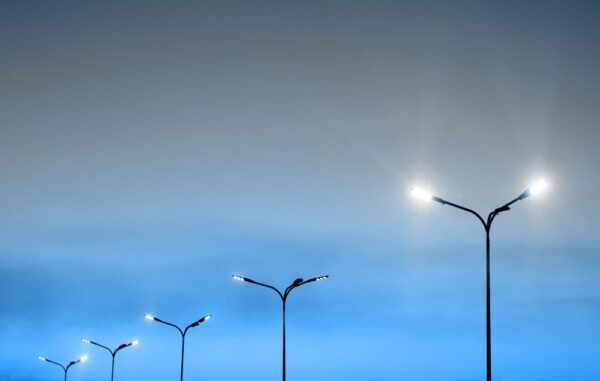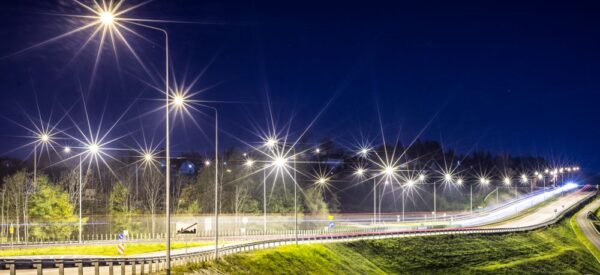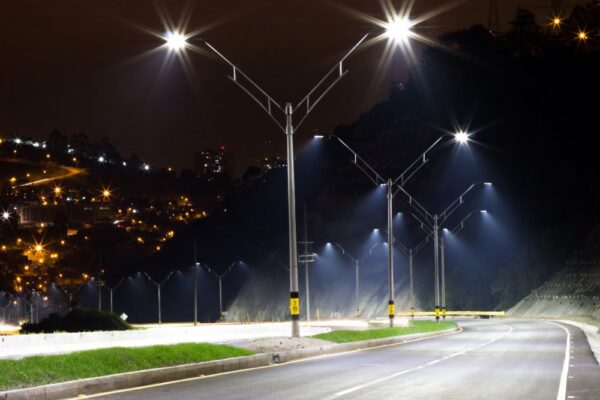Los Angeles has already converted more than 75% of its more than 200,000 street light to LED technology. Chicago, New York, Shanghai, and Copenhagen are well into plans to convert their own street lighting to LED’s. Other smaller cities around the globe are considering the same thing. Cities that retrofit their street lighting to LED systems are more than just a fad. LED retrofits are a trend that will accelerate as LED street lighting systems become more available and affordable and result in many Benefits of LED Street Lighting.
Cities that have converted or that are considering and LED conversion typically point to improved safety and the more favorable economics of LED lighting systems. From a safety perspective, light from LED fixtures can be aimed and controlled to eliminate the dark spots and shadows that are common with more traditional metal halide or high pressure sodium street lights. LED luminaires are available in multiple different light dispersion patterns, and those luminaires can be mixed and matched to shed uniform lighting across sidewalks and roadways.
The quality of LED street lighting is also a substantial improvement over traditional lights. LED’s are capable of generating light with a higher color rendering index (CRI) than traditional lighting, which is closer to natural sunlight than other artificial light sources. A higher CRI better illuminates small differences and subtle contrast changes in road and sidewalk surfaces. Motorists and pedestrians alike will see everything more clearly under LED street illumination.
The economics and cost savings that a city can realize with an LED street lighting retrofit are beyond questioning because there are many Benefits of LED Street Lighting. Modern LED lights can generate the same or better illumination as traditional street lighting fixtures with up to 50% lower energy input. LED fixtures can also continue to operate with no degradation of lighting quality for more than 50,000 hours, and in some cases up to 100,000 hours. Between utility cost savings and lower maintenance expenditures, cities will recoup their initial investment in LED street lighting in under two years.
Lower energy consumption and operating costs also translate into a lower carbon footprint, which satisfies initiatives adopted by many cities to be more eco-friendly and to seek environmentally sustainable solutions to common issues. Cities that are targets of light pollution complaints will receive an added benefit from the superior control characteristics of LED street lighting systems. Among their many other advantages, LED lighting is dimmable, and can come to full illumination within seconds of being powered on. Cities can use these features to tone down illumination when fewer motorists or pedestrians are on the streets, and to bring the lights back to full illumination when car and foot traffic increases.
LED designers and engineers have also responded to criticism of LED lights that have come from the medical establishment. Some original LED street lighting systems created eyestrain as a result of their brightness and glare, and the preponderance of blue-wavelength light in those original fixtures tended to keep people awake in the evening hours. Newer fixtures and systems have addressed these issues with lenses and diffusers that reduce glare, and new materials that generate warmer light in warmer color spectra.








